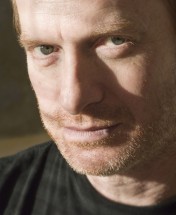A Visionary of Self-Expression: An Interview with Photographer Janusz Kawa
Flipping through the brightly colored pages of Vogue, Cosmopolitan, or The New York Times Magazine, you’ve probably stumbled upon one of his photographs; a man who is nothing less of a visionary behind his Nikon’s lens, illuminating people that lie forgotten by the world as well as those who have become entrapped by the limelight — bringing their true colors to light.
Highly regarded by magazines and the fashion industry, renowned Polish photographer Janusz Kawa has managed to make a name for himself in the city he only dreamed of as a little boy in Warsaw, Poland; the mecca for artists: New York.
Referring to himself as a psychologist, whilst dealing with all the diverse personalities in the studio, he eloquently conceptualizes his black and white photographs, preparing the frame in his mind, before the final execution of his well-aimed shot. From portraits of Morgan Freeman and Christopher Walken to fashion spreads and gallery exhibitions in places like Paris and Mexico–he has done it all. Presently he is contemplating publishing a book and hopes to one day exhibit his multitude of work in his home country.
But the beginnings were anything but easy.
Making only a mere $2.25 per hour on his first photography job in Chicago as a photographer’s assistant, and with only a limited grasp of the English language, Kawa was walking on the edge of a steep and unstable mountain. Yet it was during this job, as well as subsequent ones that would follow that he began his research and realization of the human portrait eliminating any barriers that came his way. After many years of exhaustive experimentation and on-field practice, the 51-year-old photographer has created his own language — a language of images that speaks to people across the world without the need for syllables.
In an exclusive interview for GALO, Kawa talks about his first impression of the States in the 1970s, his first camera, and the lesson he learned from the celebrated Spanish tenor Placido Domingo.
GALO: When did your passion for photography first develop?
Janusz Kawa: I started photography when I was in grammar school. I was 14-years-old. A friend asked me to join a darkroom club, and ever since then, I was in love with photography.
GALO: While you lived in Poland you were interested in film and even had a few roles in theatre and on television. Was there a particular reason why you did not go down this path later on after moving to Chicago?
JK: When I was playing in theatre in Poland, and acting in television productions in the studios, I was also doing photography on my own. When I came to Chicago, I attended the Art Institute of Chicago, and photography seemed like it was the best way to express my thoughts and desires. Photography was the silent language, therefore, more expressive for someone with not perfect command of the English language.
GALO: Why did you decide to move from Poland to the United States?
JK: I always dreamed of traveling, and at that time in Poland, we had no freedom of movement. Therefore, I grabbed the opportunity to move to Chicago, so I could realize my dream.
GALO: I read somewhere that at first you were not fond of Chicago – in fact, you disliked it so much that after a year you returned to Poland. Why did you feel this way? Do you still have this feeling sometimes now while living in New York?
JK: When I came to Chicago I only knew America from Hollywood movies. So with this kind of image in my mind, it was very disappointing to see the reality of a conservative city of [the] Midwest. Also most cities were at that time, in the 70s, on the decline and poor. NYC is a different kind of a place that has a truly European flavor, vibrant where all kinds of [the] best talents come from all over the world. It’s an ever-changing, exciting environment; I feel very much happy and at home here.
GALO: Photography begins with a camera. What was your first ever camera?
JK: I got my first camera when I was 12-years-old, a Leica from my father, which I took apart to see what was inside. I never succeeded in putting it back together.
GALO: Do you have a sole favorite now?
JK: Right now Nikon and Hasselblad are my favorite cameras.
GALO: At the start, you wanted to pursue portrait and artistic photography as a career. What led you to pursue fashion photography instead?
JK: At the time that I graduated with an art degree there were no available art opportunities, there were very few photography galleries; there were maybe one or two galleries in Chicago. The choice was to have a full time job doing something else, or enter commercial photography, and be able to earn a living doing so. Since I always photographed people, it was a natural switch to fashion photography, which seemed at that time the most rewarding commercially and offered opportunity to travel.
GALO: After coming to the States, what was your first photography job?
JK: I worked in what was called a “copy lab” with all the big view cameras — 11”x14” [ones]. It doesn’t really exist anymore. It was called photo stats. And then I worked in a photo lab printing black and white images.
(Article continued on next page)

